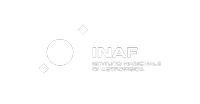Joint Call for Proposals, 2013B
Following the recommendations to ASTRONET on the future use of Europe's 2-4m telescopes as presented in the ETSRC report (see here), INAF andNOTSA, owners of the TNG and NOT telescopes on La Palma, Canary Islands, have agreed to enter into a closer collaboration. As an initial step toward a more comprehensive integration, an agreement has been signed for common use of facilities and services at their offices which are now located next to each other in San Antonio on La Palma.
Here we offer observing time at both telescopes for the two communities in a joint call for proposals for the coming semester 2013B (AOT28 in TNG nomenclature; Period 48 in NOT nomenclature). Note that the 2013B semester will start on the 1st of September for TNG and on the 1st of October for NOT.
There will be:
• 10 nights at TNG open for Nordic proposals
• 20 nights at NOT open for Italian proposals
Information on the available instrumentation can be found at
and at
The nationality of a given proposal will be determined by the nationality of the PI (provided at least 50% of PI+CoIs are Italian and/or Nordic).
Applications for each telescope should use the proposal form for the telescope they are applying for, following the instructions supplied at
and at
www.not.iac.es/observing/proposals/P48/
The deadline for the submission of proposals is 12 UT on the 2nd of May 2013.
Proposals will be evaluated by the relevant telescope committee (TAC for TNG and OPC for NOT). Joint ‘Italo-Nordic’ proposals and/or proposals using both telescopes are encouraged.
In case both telescopes are requested, proposals to each telescope should be submitted, where in principle the scientific justification will be the same in both forms, and only the technical justification relevant for the specific telescope is given in each proposal separately.
It is our intention to expand this system of offering observing time at both telescopes in future semesters. We hope that this announcement will mark the begin of a scientific synergy between our communities, and lead to a further enhancement in the scientific productivity of both telescopes.

